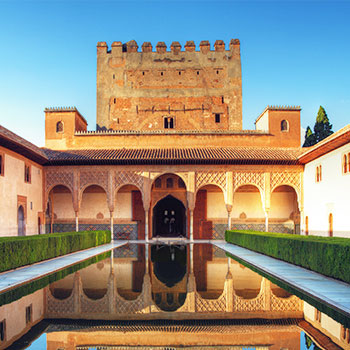
- ST
- SU
- SE
- YR
- Starting at $5,295
![]() Get a Flight Credit worth up to $350
when you apply with code* by May 6, 2024
Get a Flight Credit worth up to $350
when you apply with code* by May 6, 2024

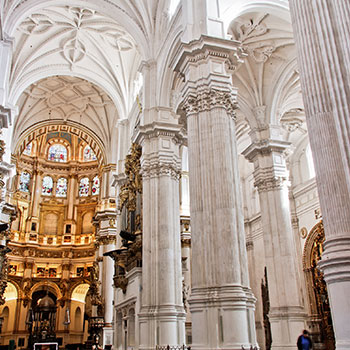
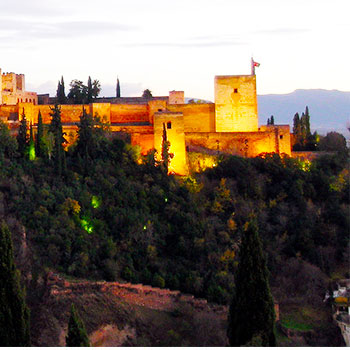
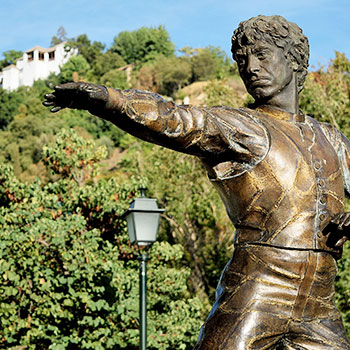
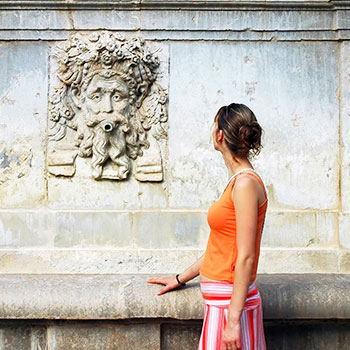
CEA CAPA offers many housing options while you’re studying abroad in Granada. Standard CEA CAPA housing is included in your overall program price. You may also have the option of arranging your own independent housing, but this is not recommended. For more information on housing, connect with your student advisor.
Granada study abroad programs offer several housing options for students depending on their preferences. Most of CEA CAPA Granada’s housing options are located on campus or in the city center, 10 to 35 minutes away from the University of Granada.
Granada housing options include:


*Housing options may change term over term and will be confirmed on the housing application form prior to the start of the term. Below are the housing options that have been offered in the past.
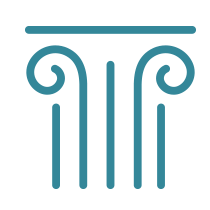

The University of Granada (UGR) was established in 1531; over the last five centuries, it’s grown into one of Spain’s largest universities. Its influence as a center of social and cultural importance continues to increase, making UGR a major intellectual focal point in the region. With a student population of 80,000, the university offers a complete range of courses and a variety of cultural, artistic, and sport activities.
You’ll take classes at UGR’s Modern Language Center, Centro de Lenguas Modernas (CLM), established in 1992. It’s centrally located in the Realejo quarter, the former Jewish neighborhood, in the ancient Palace of Santa Cruz (16th century) and a charming modern palace called Huerta de los Ángeles. The Centro offers courses for international students and foreign language courses for Spaniards, with a total population of about 7,500 students.
UGR hosts students from all over Spain and the world. Social and cultural activities sponsored by the university foster interaction between international and Spanish students.
The University of Granada is recognized by the Spanish Ministry of Education as a degree-granting institution of higher learning.
The Spanish grading system is based on a scale of 10, as opposed to 100 in the U.S. system. It would be inaccurate to merely multiply a Spanish grade by 10 to find its U.S. equivalent. Grading in Spain is usually more severe than at U.S. institutions, and you should be prepared to adapt to different methods of teaching. Transcripts from Spanish universities list both numerical and verbal grades.
Written and oral exercises, reading exercises, homework assignments, and attendance are taken into account when calculating the final grade, but greater weight is given to thoughtful classroom participation and performance on exams.
The University of Granada has released the following chart to assist U.S. universities in interpreting the Spanish grading scale:
|
Spanish Verbal Grade |
US Verbal Equivalent |
Spanish Number Grade |
U.S. Letter Equivalent |
|
Sobresaliente Honor |
With Honors |
10 |
A+ |
|
Sobresaliente |
Excellent |
9.0 - 9.99 |
A |
|
Notable |
Very Good |
8.5 - 8.99 |
A- |
|
Notable |
Very Good |
8 - 8.49 |
B+ |
|
Notable |
Very Good |
7.5 - 7.99 |
B |
|
Notable |
Very Good |
7 - 7.49 |
B- |
|
Aprobado |
Adequate/Pass |
6.5 - 6.99 |
C+ |
|
Aprobado |
Adequate/Pass |
5.5 - 6.49 |
C |
|
Aprobado |
Adequate/Pass |
5 - 5.49 |
C- |
|
Suspenso |
Insufficient |
4.5 - 4.99 |
D |
|
Suspenso |
Fail |
0 - 4.49 |
F |
|
No presentado |
Incomplete or Exam Not Taken |
Incomplete |
N/A |
|
Assistencia Insuficiente |
Insufficient Attendance (80% Required) |
Not Applicable |
N/A |
Please note that this grading scale is recommended by CEA and the University of Granada, but final credit and grade evaluation is ultimately determined by your home school.